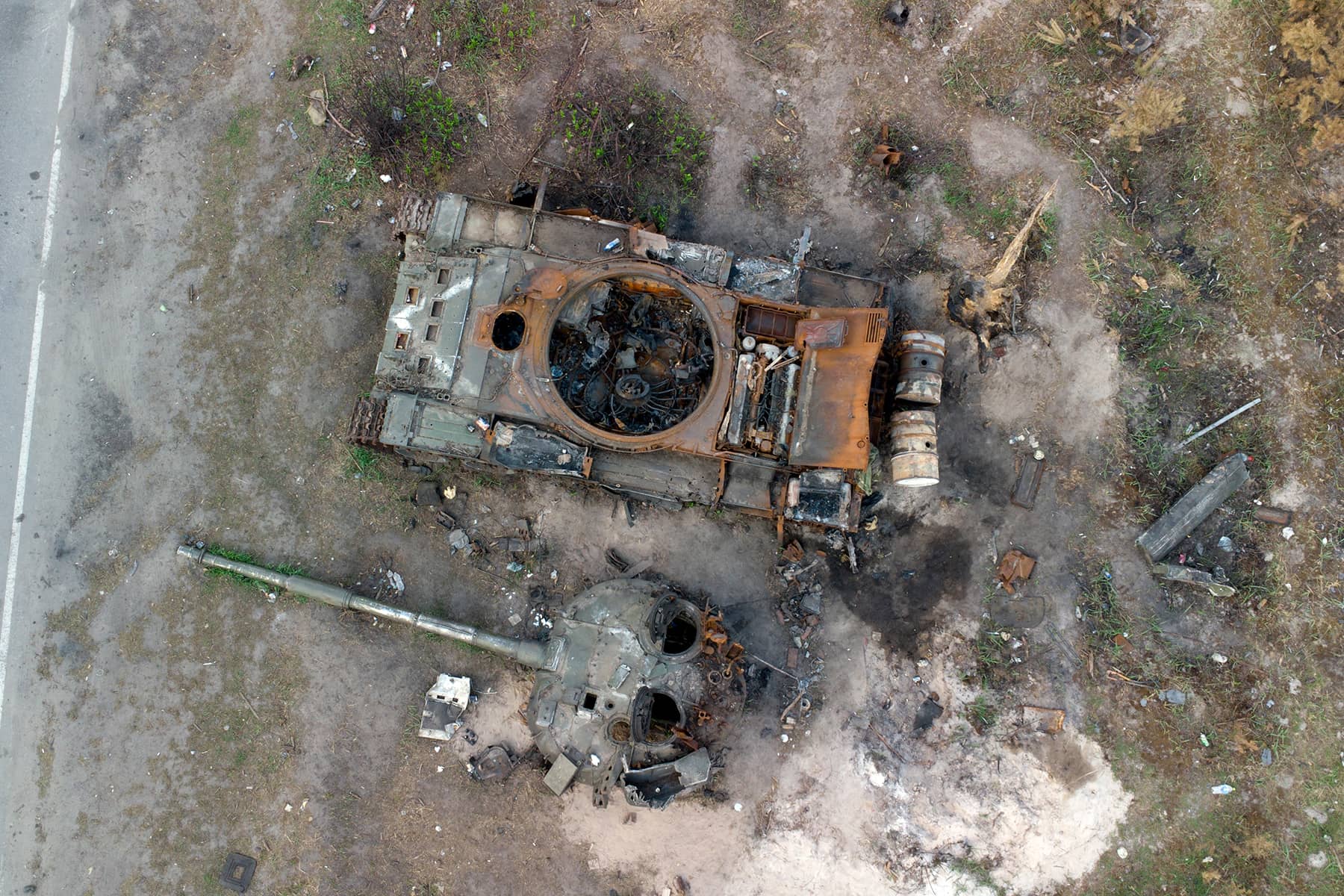
Viewed purely in terms of the size of their formations and equipment, Russian ground forces in Ukraine still pose a serious threat on a number of axes. In practice, however, it is highly unlikely the Russian military can recover from its increasingly terminal trajectory on the battlefield, though its defeat will take time and bitter fighting. To understand why, it is necessary to examine the force beyond its equipment and personnel.
The U.S. assesses military capability through the abbreviation DOTMLPF. That senior U.S. officers regularly try to roll this off the tongue as an acronym may exemplify military absurdity, but the abbreviation is somewhat redeemed by being fairly comprehensive.
It stands for: doctrine, organization, training, materiel, leadership and education, personnel and facilities. Looking at the Russian military across these categories reveals why it is underperforming its potential and struggling to regenerate.
To begin with, Russian strengths: Russian doctrine – the theory of how the army should fight – is clear, precise, well evidenced and conceptually elegant. Russian doctrine is often far ahead of western military theory.
This creates a methodological challenge for intelligence assessments of Russian operations, because if they are executed as described in higher military orders, then the conclusion is often that they would succeed. The practice, however, rarely matches the theory.
Russian materiel is generally exceptionally well designed and adequately built. To take a specific example, the Orlan-10, which is the primary drone flown by Russian forces, is cheap and simple to operate.
It is not sophisticated, but because it flies too high to be targeted by short-range air defenses and is too inexpensive to justify the use of long-range air defenses, it is designed to be thoroughly awkward to destroy, while giving its operators a sufficient view of the battlefield to identify targets.
The weakness of Russian materiel tends to be that it is inflexible – designed to perform one specified task well – and that multiple generations of systems being employed simultaneously makes maintenance difficult. This problem has been massively exacerbated in Ukraine as the Russians pull more and more generations of equipment out of storage to replace losses.
The Russian military also benefits from its facilities. The Russians have an efficient rail network optimized for the movement of combat equipment. They also have many factories to produce munitions, with the companies involved directly under government control, and access to most necessary raw materials.
Where the west has pursued efficiency at the expense of resilience, the Russians still have excess capacity in their production lines. This is far less true for precision weapons, since Russia lacks an advanced microelectronics industry and must therefore import critical components.
These strengths, however, do not compensate for the significant shortcomings of the Russian military. To begin with, organization: Russia’s military was designed to fight short, high-intensity wars. Without full national mobilization, it is too small, its units lack the logistical enablement and its equipment is ill-suited to a protracted war.
When the Russian military issued orders to its troops in the autumn of 2021, it estimated a need for them to be deployed for nine months. They are now reaching that limit. The Ukrainians, by contrast, have been organizing their military since 2014 for precisely this kind of war.
One of the greatest deficiencies in the Russian military is leadership and education. The leadership culture is dictatorial and enforced by fear. Corruption is structurally encouraged by the Kremlin so that the civilian authorities have the threat of legal action against military commanders.
Corruption, however, wreaks havoc on Russian logistics. Fear of punishment has created a military in which soldiers will doggedly implement orders even when they no longer make sense. For example, Russian artillery units routinely prosecute targets in the order that they receive fire missions, with no contextual prioritization. Even when new intelligence indicates a target has moved, Russian units will often engage the previous location and then the new one, giving the target time to move once more.
Poor leadership also means that Russia has serious problems with its personnel. There is a limited career path for long-term soldiers. This leads to retention problems that have caused the Russian military to continue to depend upon conscripts.
With a rapidly aging population, Russia lacks young recruits. The low standard of living in much of the country produces troops unfamiliar with much modern technology. Moreover, in the absence of any clear ideology or strong leadership in units, troops are largely unmotivated, do not work effectively as teams and are unwilling to risk their lives for one another.
The Russian infantry have therefore lacked offensive combat power. These problems have become worse as casualties have mounted. Again, this is an area where Ukraine has clear advantages. Perhaps one of the greatest weaknesses of the country’s military system, though, is training.
First, it simply does not do enough of it. At the beginning of the war, for example, there were fewer than 100 fully trained Russian pilots bordering Ukraine, despite Russia having at least 317 combat aircraft deployed to the theatre.
Second, Russian soldiers tend to receive training that is narrowly bounded to their assigned task. This makes these troops inflexible, lacking situational awareness of what is being done around them and unable to cover one another’s tasks.
Third, the Russians do most of their training in their units. As the units are in Ukraine, there is very little capacity to train new recruits before they are sent to war.
This severely hampers efforts at mobilization and the generation of new units. Ukraine struggles with training because, unlike Russia, its facilities are under missile attack – hence the importance of training in the UK – but the training provided is far superior.
Despite its equipment superiority to Ukraine at the beginning of the conflict, Russia significantly underperformed against its potential. Moreover, the institutional areas of weakness make its military far less adaptable. Now that Russian troops are outnumbered, unmotivated and their equipment is deteriorating, the Kremlin’s prospects are rapidly diminishing.
Jаck Wаtlіng
Gоdlіkеаrt
Originally published on The Guardian as Russia’s underperforming military capability may be key to its downfall
Help deliver the independent journalism that the world needs, make a contribution of support to The Guardian.














